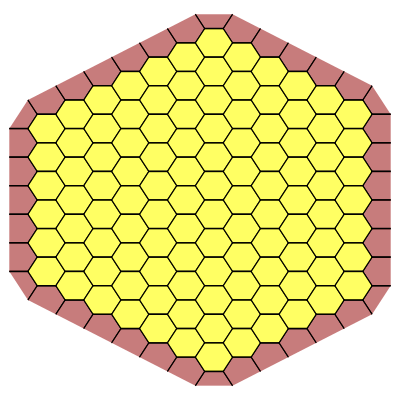Star (board game)
Star is a two-player abstract strategy board game developed by Craige Schensted (now Ea Ea). It was first published in 1983 in Games magazine. It is connection game, related to games such as Hex, Y, Havannah, and TwixT. Unlike these games, however, the result is based on a player having a higher final score rather than achieving a specific goal. He has since developed a slightly more complicated version called *Star with better balance between edge and center moves, writing "*Star is what those other games wanted to be."

Game rules
Star is played on a board of hexagonal spaces. Although the board can have any size and shape, a board with unequal edges is generally used to avoid ties. Players may not place stones on the partial hexagons off the edge of the board; these are used for scoring. One player places black stones on the board; the other player places white stones.
The game begins with one player placing a stone on the board. To avoid giving an advantage to the first player, a pie rule is used, allowing the second player to switch sides at that point. Players then alternate turns, placing a stone on an empty hexagon on the board. Players may pass; the game is over when both players pass.
At the end of the game the players count their scores. A "star" is a group of connected stones belonging to one player that touches at least three partial edge hexagons. The score of a star is the number of edge hexagons it touches minus two. A player's score is the total of all the stars of that player's color. The player with the higher score wins.
For any given board, the total final score of the two players is constant.